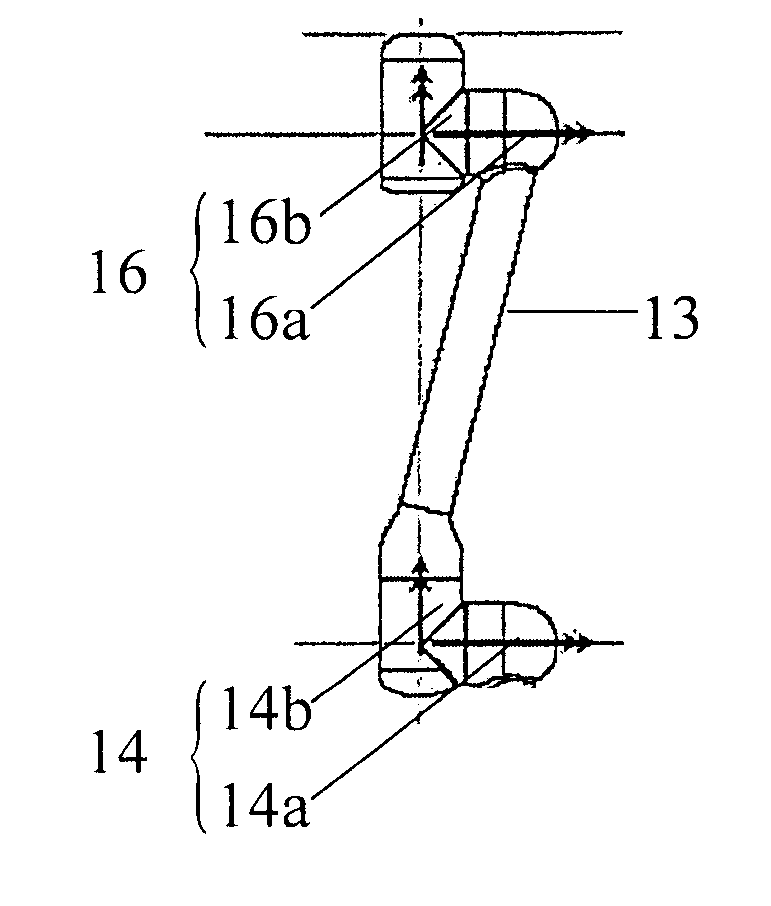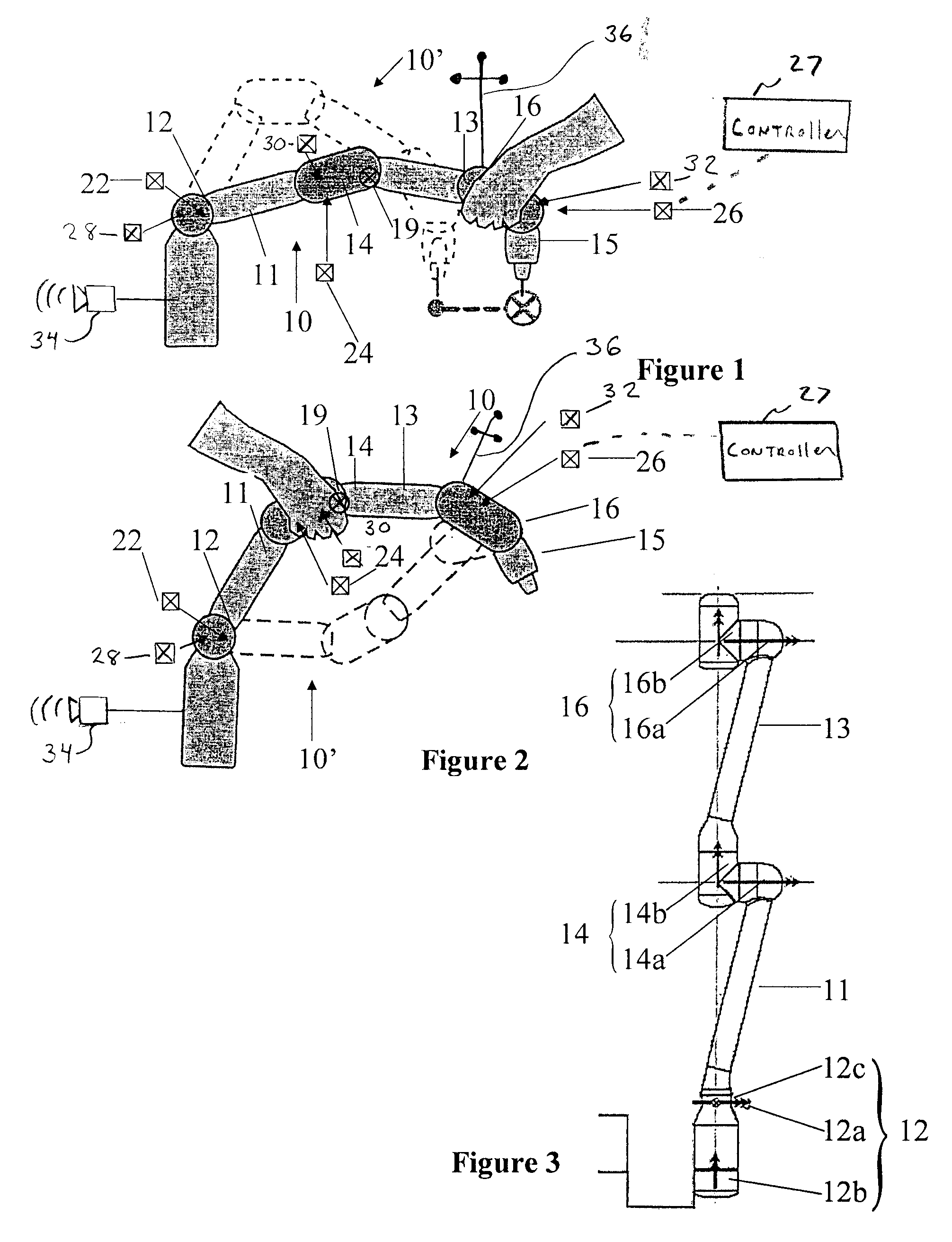Anthropomorphic medical robot arm with movement restrictions
a robot arm and anthropomorphic technology, applied in the field of anthropomorphic medical robot arms, can solve the problems of user surprise, robot colliding with treatment staff or treatment devices, unpredictably and unavoidably, etc., to improve intuitive use, shorten the learning time of operating the device, and increase safety
- Summary
- Abstract
- Description
- Claims
- Application Information
AI Technical Summary
Benefits of technology
Problems solved by technology
Method used
Image
Examples
Embodiment Construction
[0032]FIGS. 1 and 2 schematically show an exemplary robot arm 10 that sits on a base 10a. A first joint 12 belonging to the arm 10 (also referred to herein as the base joint or shoulder joint) is situated on the base 10a. As follows from the schematic drawing in FIG. 2, the base joint 12 includes a number of jointed connections or joint connections that are indicated as rotational axes. From FIG. 3, the base joint or shoulder joint 12 includes three axes or joint connections that are shown by arrows, wherein the arrow 12c is perpendicular to the plane of the drawing.
[0033] A first arm element 11, which could also be referred to as the “upper arm” of the robot arm 10, is attached via a joint above the shoulder joint 12. The first arm element 11 continues in a direction toward a distal end of the arm 10 and ends at joint 14, which includes two joint connections or rotational axes. In FIG. 3, these rotational axes are again shown by arrows which have been provided with the reference s...
PUM
 Login to View More
Login to View More Abstract
Description
Claims
Application Information
 Login to View More
Login to View More - R&D
- Intellectual Property
- Life Sciences
- Materials
- Tech Scout
- Unparalleled Data Quality
- Higher Quality Content
- 60% Fewer Hallucinations
Browse by: Latest US Patents, China's latest patents, Technical Efficacy Thesaurus, Application Domain, Technology Topic, Popular Technical Reports.
© 2025 PatSnap. All rights reserved.Legal|Privacy policy|Modern Slavery Act Transparency Statement|Sitemap|About US| Contact US: help@patsnap.com


